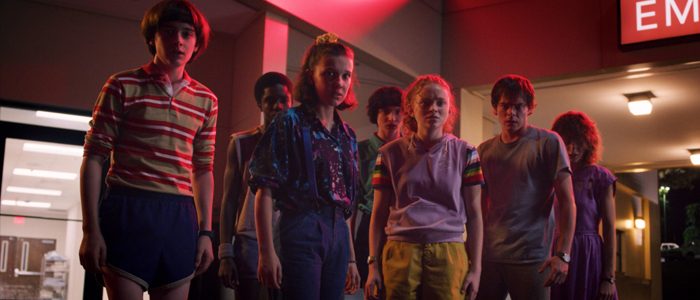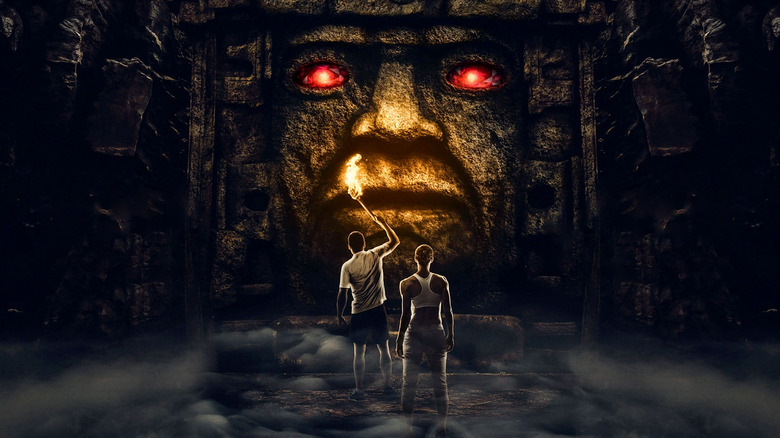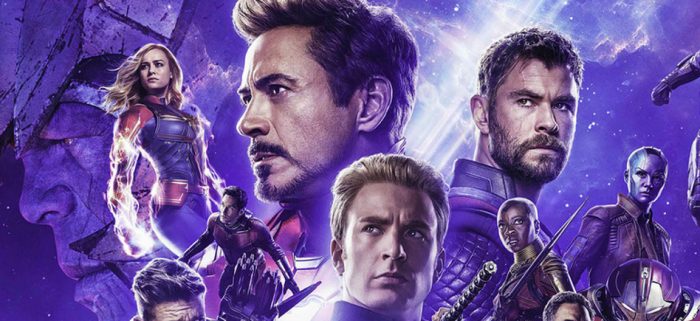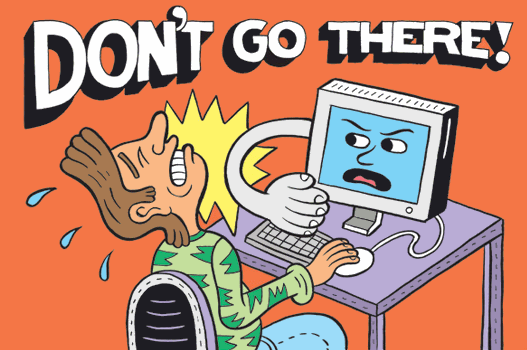
On the Fourth of July, Stranger Things returned to Netflix with much fanfare as would be typical of one of the streaming juggernaut’s most defining – if not the defining – series. And it took no prisoners, racking up a body count as the season went on. And we’re going to talk about it. So this is your one and only major spoiler warning.
The final episode of the season saw the show kill a series regular, Dacre Montgomery’s Billy, and the second-billed star of the cast, David Harbour, who plays Hopper. Even after the fatalities and the supposed defeat of the Mindfllayer, the show chooses to spend a big chunk of the finale chronicling the emotional chain reaction of the beloved fan favorite’s death. The toll that the resulting actions, including Joyce (Winona Ryder), Will (Noah Schnapp), Jonathan (Charlie Heaton) and Eleven (Millie Bobby Brown) moving away, reigns supreme when compared to any other emotional moment and the series so far, and the argument could be made that it delivers some of the most poignant moments in all of modern television.
For me, my first true tear of the finale came when Will broke down when hugging everyone, beginning with Lucas (Caleb McLaughin), as well as the reactions of the rest of the gang Mike (Finn Wolfhard), Max (Sadie Sink), Dustin (Gaten Matarazzo) and Nancy (Natalia Dyer). We were dealing with some heartbreaking stuff.
So, despite inundating viewers with pain and sorrow in the aftermath of Hopper’s death, the show uses multiple easter eggs to drive home the point that Hopper will make an eventual return-from-the-dead, or at the very least, the door is open for the character to make a comeback. In a recent interview with /Film’s Chris Evangelista, Harbour confirms his character’s fate and says that he is alive. All of this is fine and dandy, as Harbour turns in stellar performances and his character is ingrained in the fabric of the show – who wouldn’t want Hop to be alive?
But in the same turn, it’s hard to ignore that in doing so would render all of those powerful moments in the wake of his death virtually pointless. And while I’m fully aware of the fact that Stranger Things is a sci-fi series where rules and logic don’t always apply, giving the presence of large, dog-like creatures whose heads open wide like a creepy flower. At the inevitable conclusion of Stranger Things, we’d all want to see a happy ending with Hop included, but at which point does a show go too far at taking viewers through emotional sensations that reviving a “dead” character would be just emotional manipulation?
A Breakdown of the Back From the Dead Trope
The “Back From The Dead” television trope is nothing new and is actually one of the most popular tropes out there. It is a storyline tactic employed by shows and films for years and years, primarily in daytime soap operas, where The Bold and the Beautiful’s Taylor Forrester (Hunter Tylo) has come back from the dead not once, but twice! After daytime soaps, the trope is probably most-used the next by superhero films and television shows, because Marvel’s Bucky Barnes (Sebastian Stan) will never die.
There are also sub-tropes of the Back From The Dead, and chief among them is the Faking Your Own Death trope. But what has become increasingly popular is the Where Is The Body trope, which is the one that Stranger Things seems to be employing with Hopper’s “death.” The show clearly did not show Hopper actually being visible when everything went boom, and Joyce turned away during these final moments as well. So we actually didn’t see Hopper perish. Where did he go? Where is his body? Did he escape? Did he run into the Upside Down? Was he captured by the Russians? All of these are viable options because we didn’t see a body.
As a matter of fact, the show has used this trope one time before, in its first season. After disintegrating the monster in the classroom at the end of season one, Eleven essentially disappears into thin air. Although there weren’t as many easter eggs planted here in comparison to Hopper’s situation, no one actually believed that the character, who was central to the storyline, would be killed off. Then, at the end of the second season’s first episode, we learned what actually happened to Eleven: she ended up in and escaped from the Upside Down as we once thought. It also helped that for all intents and purposes, Netflix and the series never acted as if Brown wasn’t returning and she was fully involved in its promotion. While it’s not exactly the same, the show looks to be setting up a story for Hopper sort of like they did for Eleven back in the first two seasons.
Comebacks Work…But Other Times They Don’t
The come-from-the-dead storyline hasn’t always been good for television shows. Take for instance NBC’s long-running crime thriller, The Blacklist, which was renewed for its seventh season earlier this year. Back in its early heyday, around 2016 and the third season, the show made what seemed to be a controversial move by killing off its lead character, Liz Keen (Megan Boone). And yes, we saw her body, attended her funeral and everything. For multiple episodes, the show performed as if the character is gone for good, even choosing to omit the likeness of the character and Boone in marketing materials for the rest of the season. Then in the season finale, it is revealed that Liz is actually alive, only to have her kidnapped. The first time, it was cool, but considering The Blacklist enacted multiple back-from-the-dead storylines after this, at some point, killing folks off becomes the equivalent of beating a dead horse.
Nine times out of ten, it’s better for the fictional dead to just remain dead. Several of the biggest shows in television history have taken big swings in offing crucial key characters, and it paid off big time. For non-emotional deaths that serve as a catalyst for storylines, a perfect example is the death of Zoe Barnes (Kate Mara) in House of Cards. Back in 2014, when Netflix was still kind of building the groundwork for being the behemoth it is today, it made a huge move on its then-signature show, whacking one of its major players in a scene that seemed to be out of nowhere (unless you were very familiar with the British version). It also came at an early time for Netflix when it was still disrupting the television model. The presence of Zoe’s hypothetical ghost still remained ever-present in the storylines all through its Robin Wright-led final season as the moment when the series first went there.
Fan outcry may be intense, but it is important to note that just because a character is written off and killed, that doesn’t mean that their character and the death won’t impact or reverberate through the rest of the series. In The Wire, often regarded as the greatest television series of all time, the show killed off Michael K. Williams’ beloved character, Omar Little. The character was beloved – President Barack Obama even named him as his favorite character on television. And though the character died six episodes into the show’s final season, his presence was felt through the remainder of the show. It also proved to be a full circle moment, as Omar’s eventual killer was seen earlier in the series imitating him. It was a tragic, yet perfect way to finish the character’s journey. Many shows, such as Grey’s Anatomy, use character deaths to propel storylines that have an ongoing emotional impact not just on the characters, but on the audience as well. And that’s what Hopper’s death in Stranger Things season 3 serves as for viewers.
Since Hopper’s Coming Back, Here’s What Should Happen
Considering the easter eggs, the post-credits scene, and Harbour’s own words to /Film, we know that the show is inevitably going to bring Hopper back. And since this seems like it’s going to happen regardless of what anyone thinks, there is a way to bring the character back into the fold without lessening the emotional impact of the character’s supposed death.
The Duffer Brothers have stated numerous times previously that there is a four-to-five season plan for the show. Based upon the events of season three, either of these would seem extremely likely to happen and would make total sense. In either situation, a Hopper return should be pegged close to the end of the series’ run. Given the show’s track record and how extremely booked several of its stars are, it’ll probably be another two years before we see another Stranger Things season. But no matter how much time elapses, the wound of Hopper’s death will still be fresh, no matter when the season takes place. The characters should still be dealing with the tragic events of season 3. It would be smart to spend the remainder of whatever is left of the series to operate under the guise that Hopper is long gone and six-feet under. If the idea is to do five seasons, maybe have the character not even appear in the fourth season. And if the series does decide that the show’s perfect stopping point will be season four, bringing back the character should be held off as late as possible, unlike Eleven’s early “return-from-the-dead” back in the second season. If they choose to bring him back early, in any capacity, that’ll almost be like the equivalent of Tony Stark (Robert Downey Jr.) showing up alive and well in Spider-Man: Far From Home.
Even if the season 4 premiere opens up with “Hop’s back y’all,” the show has very smartly set up an endgame of sorts, but let’s just hope they don’t bring their Tony Stark back from the dead so quick. At least not yet.
The post ‘Stranger Things’ Season 3 Seemingly Killed Off Some Major Characters – Here’s How They Can Avoid Some Classic Television Pitfalls in Season 4 appeared first on /Film.







